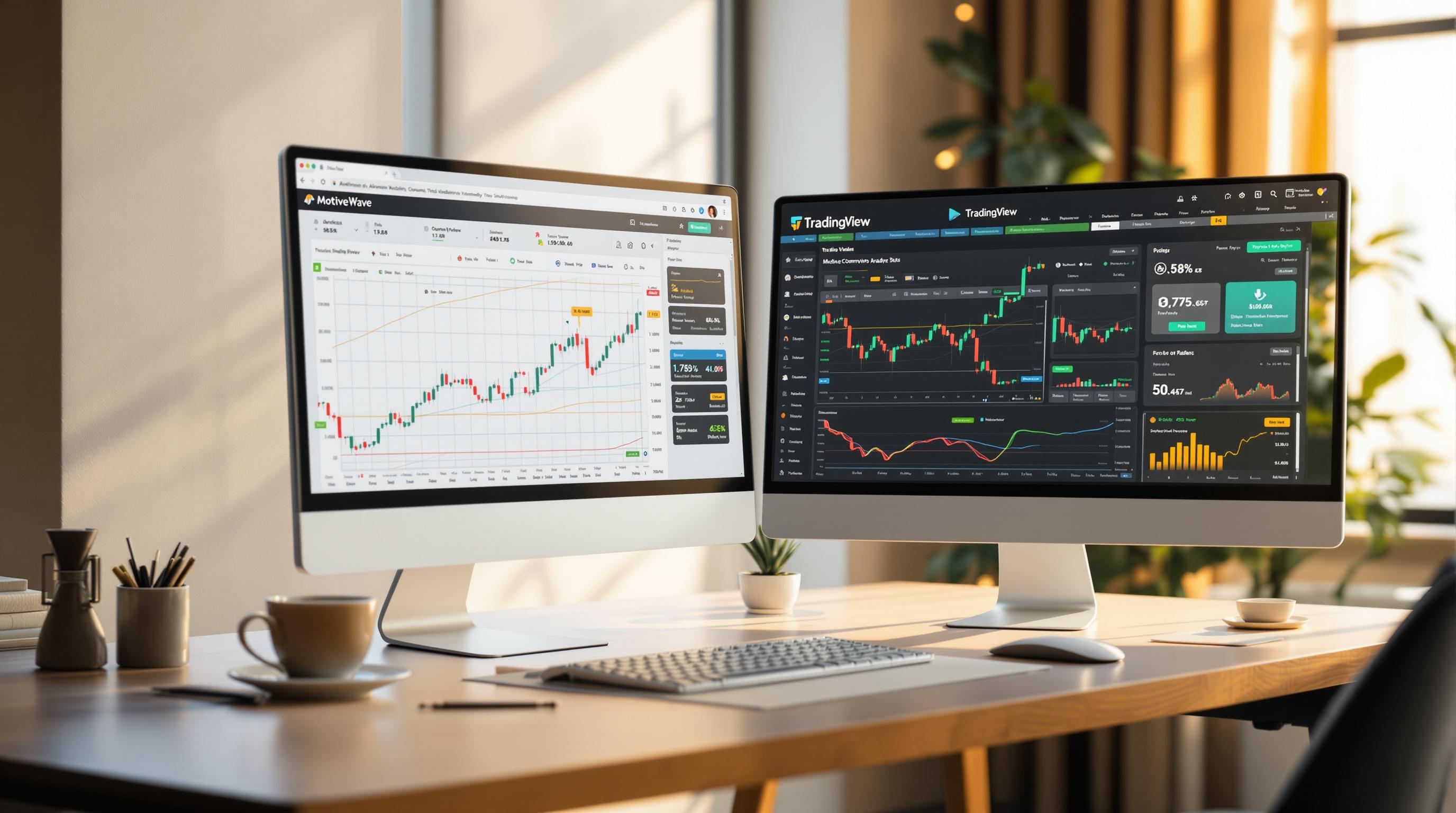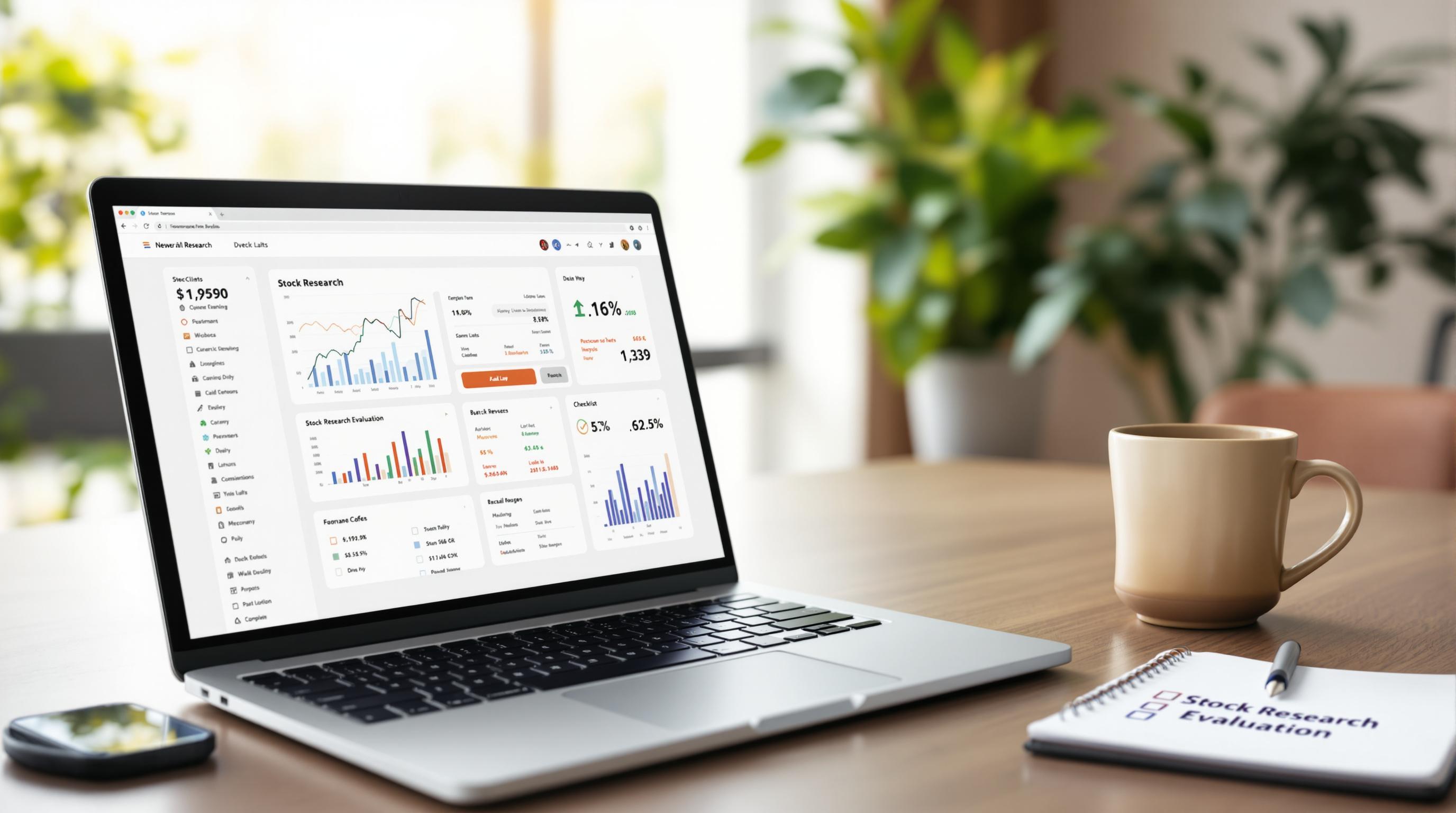Investment tools often fall short due to outdated data, overwhelming alerts, and poor integration. These issues can lead to bad decisions and missed opportunities. But there are solutions:
- Data Problems: Many tools lack accurate, integrated, and real-time data. Look for platforms with verified sources like SEC filings, real-time updates, and alternative data (e.g., social media trends or insider activity).
- Alert Overload: Too many alerts can cause decision fatigue. Use smarter alerts by setting broader price ranges, prioritizing key events, and filtering out minor noise.
- Integration Issues: Poor compatibility between tools disrupts workflows. Choose platforms with bi-directional syncing, open APIs, and real-time updates for seamless operation.
- Limited Risk Analysis: Basic tools often ignore critical risks. Advanced tools offer multi-factor analysis, real-time tracking, and scenario testing to better manage portfolios.
Quick Comparison of Key Features
| Issue | Basic Tools | Advanced Tools |
|---|---|---|
| Data Accuracy | Limited, outdated | Verified, real-time, alternative |
| Alerts | Overwhelming, basic triggers | Smart filters, priority settings |
| Integration | Standalone, manual syncing | Seamless, API-based workflows |
| Risk Management | Basic metrics (volatility only) | Multi-factor, real-time analysis |
Pro Tip: Test tools with free trials to find the best fit for your needs. Focus on platforms that simplify your workflow, enhance decision-making, and align with your strategy.
Stock Dealer Platform Problems
Data Quality and Accuracy Issues
Poor-quality data on stock dealer platforms can seriously impact investment decisions. Problems like delayed price updates, incomplete details, and inconsistent metrics make it harder to evaluate opportunities effectively.
The reliability of data sources plays a big role here. When platforms rely on unverified third-party data, it creates inconsistencies in critical metrics such as EPS calculations, market capitalization, dividend histories, and trading volumes. These inaccuracies can lead to flawed analyses and costly errors.
To address these issues, it's essential to use tools that focus on maintaining accurate and reliable data.
Using Better Data Tools
Investors can tackle these challenges by choosing platforms that prioritize precise and dependable data. The most effective stock dealer platforms offer features like:
-
Primary Source Integration
Direct connections to official filings, such as SEC reports, ensure accurate and up-to-date company data, reducing dependence on third-party aggregators. -
Real-Time Data Verification
Continuous cross-referencing with reliable sources ensures the accuracy of market prices, corporate actions, and trading volumes. -
Alternative Data Integration
Modern platforms incorporate alternative data sources for deeper insights, including:- Social Media Sentiment: Monitors market perception to identify trends early
- Hedge Fund Activity: Tracks institutional moves to understand market flows
- SEC Filing Analysis: Examines insider transactions for governance insights
For the best outcomes, look for platforms that clearly document their data sources and update schedules. Tools for visual analysis and customizable alerts can also help investors quickly identify anomalies and make decisions based on current, reliable information.
Investment management: Overcoming enterprise data ...
Macro Research Tool Limitations
Macro research tools, much like stock dealer platforms, face notable data challenges. However, their issues stem from different factors.
Gaps in Economic Data
A major drawback of many macro research tools is their incomplete access to economic data, which can limit the ability to conduct thorough market analysis over the long term.
Some common issues include:
- Lack of extensive historical data, making it hard to analyze full market cycles
- Missing critical indicators like inflation-adjusted indices, commodity prices, and exchange rates
- Delays in integrating real-time data, which can affect timely decision-making
Choosing Better Tools
To overcome these limitations, investors should prioritize platforms that provide extensive data and advanced analytics.
Data Coverage:
- Access to historical data spanning over a century for major market indices
- Inclusion of detailed datasets for essential economic indicators
- Real-time updates with global economic information
Analysis Capabilities:
- Customizable data feeds tailored to specific needs
- APIs that integrate seamlessly into existing workflows
- Advanced screening tools to assess performance and fundamentals effectively
Strategies to Address Limitations
These challenges are similar to those seen in other investment tools. To make the most of macro research tools, consider these approaches:
- Combine data from multiple sources to fill in gaps
- Stay updated on key metrics, such as:
- Product prices
- Press releases
- Stockholder and company data
- Economic indicators
- Use tools that provide features like:
- Quantitative analysis
- Risk assessment
- Portfolio management and optimization
Managing Trade Alert Overload
Too Many Unhelpful Alerts
Getting bombarded with trade alerts can hurt your investment performance. Studies show that investors overwhelmed by excessive price-tracking alerts experienced a 1% drop in performance over six months, which adds up to a 2% annual loss.
Here’s why this happens:
- Information Overflow: Endless notifications can lead to decision paralysis.
- False Urgency: Too many alerts push investors to make impulsive trades based on minor market noise.
- Cognitive Bias: Frequent notifications can fuel overconfidence and bad timing in trades.
"The tools can also exacerbate the cognitive biases of retail investors, creating a false sense of urgency and pressure to trade, resulting in increased trading and gambling-like behaviors, both of which lead to underperformance." - Larry Swedroe, head of financial and economic research at Buckingham Strategic Wealth
Setting Up Smart Alerts
To avoid being overwhelmed, set up alerts that focus on what really matters.
Key Alert Types to Consider:
| Alert Type | Purpose | Suggested Settings |
|---|---|---|
| Price Targets | Track specific buy/sell opportunities | Set broader ranges to avoid minor noise |
| Volume Spikes | Spot unusual market activity | Focus on volume exceeding 200% of average |
| News & Earnings | Stay updated on key changes | Limit to major announcements and reports |
| Portfolio Performance | Monitor significant shifts | Set alerts for changes above 5% |
How to Optimize Alerts:
- Conditional Triggers: Use multiple criteria (e.g., price and volume) instead of single triggers.
- Time-Based Filters: Activate alerts only during market hours to cut down on distractions.
- Priority Levels: Assign importance to alerts and choose different notification methods based on urgency.
Steps for Smarter Alerts:
- Set Strategic Price Targets: Choose meaningful thresholds to ignore small fluctuations.
- Use Advanced Filtering: Enable alerts only for news or events that directly affect your investments.
- Audit Alerts Regularly: Review your alerts monthly, removing irrelevant ones and fine-tuning thresholds.
These strategies help you focus on essential updates, making your trading decisions more efficient and informed.
sbb-itb-2e26d5a
Tool Integration and Ease of Use
Poor Software Integration
Inefficient tool integration can disrupt trading workflows and create data inconsistencies. Many advisory firms encounter these challenges, leading to bottlenecks and errors in daily operations.
Common Problems with Integration:
- Misleading Claims: Some platforms offer only basic single sign-on instead of true data sharing.
- Data Sync Issues: Partial synchronization results in inconsistent or outdated information.
- Manual Data Entry: Without bi-directional integration, users must manually transfer data, increasing the chance of errors.
"When everyone says they have integration with another company when all it is is a single sign-on" - Edmond Walters, founder and chief executive of eMoney Advisor
These challenges underline the importance of tools that provide real, functional integration.
Choosing User-Friendly Tools
To address integration issues, focus on tools with open architecture and intuitive design. Here’s what to evaluate:
Integration Features Table:
| Feature Type | What to Look For | Workflow Benefits |
|---|---|---|
| Data Flow | Bi-directional syncing | Smooth, automated tasks |
| API Access | Open architecture | Supports custom setups |
| Interface | Consistent design | Easier for users |
| Updates | Real-time synchronization | Prevents data delays |
With proper integration, investors can align their strategies with accurate, up-to-date information.
Key Considerations:
1. Open Architecture
Select platforms designed for seamless connections with other tools. Open architecture ensures compatibility and better data sharing.
2. API Access
Robust APIs with clear documentation are essential. As Tim Foley, managing director at Pershing, explains: "It will still be a collaborative effort, but it will greatly enhance their ability to get functionality. The hope is the overall process will become more efficient".
3. Customization Features
Look for tools offering:
- Custom watchlists
- Real-time updates
- Integrated trading options
- Advanced filtering capabilities
Best Practices for Integration:
- Conduct data audits before implementing new tools.
- Develop detailed mapping strategies for data flow.
- Schedule regular validation checks.
- Monitor system performance regularly.
- Use data transformation tools to handle incompatible formats.
Tool integration is progressing as custodians adopt open data-sharing practices. Greg Friedman, president of Junxure, notes: "The custodians are finally really embracing and opening up the data, because they are the purveyors of the data".
Risk Management Tool Gaps
Limited Risk Analysis Options
Many platforms only offer basic measures of volatility, often ignoring other critical risk factors.
Some common shortcomings include:
- Reliance on single-metric analysis
- Simplistic risk tolerance scoring
- Neglecting the impact of fees
- Disconnected or piecemeal assessments
These limitations can leave portfolios exposed to unforeseen market changes. To address this, advanced tools now provide broader and more integrated risk evaluations.
Advanced Risk Assessment Tools
Comparison of Features:
| Feature | Traditional Tools | Advanced Solutions |
|---|---|---|
| Types of Risks Analyzed | Basic volatility metrics | Diverse risk categories |
| Depth of Analysis | Surface-level indicators | In-depth evaluations |
| System Integration | Limited connectivity | Seamless integration |
| Monitoring Capabilities | Manual tracking | Real-time monitoring |
Modern platforms now include:
-
Comprehensive Risk Analysis
- Evaluates market exposure, interest rate sensitivity, credit risk, liquidity constraints, and inflation effects.
-
Risk Intelligence
- Features real-time tracking, automated notifications, customizable thresholds, and scenario testing.
-
Integration Features
- Offers automated updates, centralized reporting, and compatibility with various platforms.
Investors should prioritize tools that include templates for risk assessment, detailed analyses, enterprise risk management (ERM) capabilities, and scenario testing. These features help safeguard portfolios while ensuring they align with overall investment goals.
Tool Feature Comparison
After discussing common tool issues, let's break down how different investment tools tackle these challenges through their features.
Key Features Table
Here's a comparison of features across various investment tools:
| Feature Category | Basic Tools | Advanced Platforms | Enterprise Solutions |
|---|---|---|---|
| Data Quality | Limited historical data | Detailed market data | High-grade commercial feeds |
| Real-Time Updates | Delayed (15–20 min) | Real-time for key markets | Global real-time coverage |
| Analysis Capabilities | Basic charting | Advanced technical tools | AI-driven insights |
| Risk Management | Basic volatility metrics | Multi-factor analysis | Comprehensive risk systems |
| Alert System | Basic price alerts | Customizable conditions | Smart filtering & prioritization |
| Integration Options | Standalone only | API access | Workflow integration |
| Portfolio Analysis | Manual tracking | Automated monitoring | Advanced optimization |
| Research Tools | Limited resources | In-depth research options | Access to alternative data |
This table highlights how each type of platform addresses specific challenges, providing a clearer picture of their strengths.
For instance, platforms like TradeSmith showcase their effectiveness with measurable results. They manage over $30 billion in capital and boast a 94% customer satisfaction rate, thanks to their strong risk management tools and AI-driven analysis.
"No other website packs as much useful, context-appropriate information onto a page."
"TradeStops has brought us a new degree of confidence."
Advanced platforms take advantage of AI to dig deeper into data, solving issues like alert fatigue and overwhelming data streams. These advancements are reshaping investment decision-making through better data analysis, improved risk management, and smarter portfolio strategies.
Conclusion: Choosing the Right Tools
Selecting the right tools can make a big difference in your investment approach. The key is to pick tools that match your strategy, address specific challenges, and help you achieve your goals.
Here are three important factors to consider:
Investment Strategy Alignment
If you rely on technical analysis, look for platforms that offer features like AI-driven trend identification (e.g., $127/month). Choose tools that support your trading style and help you make informed decisions.
Cost vs. Value
Basic tools might cost about $25/month, while more advanced options average around $40/month. Weigh the price against what the tool offers and how well it fits within your budget.
Ease of Use and Integration
Go for tools that work seamlessly with your existing workflow. For example, Prosperse combines charting, watchlists, and stock screeners in one easy-to-use platform.
Take advantage of free trials to test whether a tool meets your needs for data, research, alerts, integration, and risk management. Use these tips to refine your choices and improve your portfolio management process.



